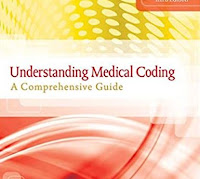Understanding the Basics of Medical Coding: A Comprehensive Guide
Understanding the Basics of Medical Coding: A Comprehensive Guide
Medical coding is a
process of assigning codes to medical diagnoses, procedures, and services. The
codes used are standardized and help in the classification and tracking of
medical information. Medical
coding is an essential component of the healthcare
industry, as it ensures accuracy, uniformity, and compliance with regulatory
requirements.
 |
| Understanding the Basics of Medical Coding: A Comprehensive Guide |
Importance of Medical Coding
Medical coding is crucial
in the healthcare industry. Accurate medical coding ensures that healthcare providers are
properly reimbursed for the services they provide, and it enables insurance
companies to track and manage healthcare costs. Additionally, medical coding
allows for the analysis of healthcare trends, which can be used to develop new
treatments, procedures, and policies.
Types of Medical Codes
There are three main types of medical codes:
1. International Classification of Diseases (ICD) Codes: These codes are used to describe medical diagnoses and are maintained by the World Health Organization (WHO).
2. Current Procedural
Terminology (CPT) Codes: These codes are used to
describe medical procedures and services and are maintained by the American
Medical Association (AMA).
3. Healthcare Common
Procedure Coding System (HCPCS) Codes: These codes are
used to describe medical supplies, services, and equipment that are not
included in the CPT codes.
Steps
in Medical Coding
Medical coding involves several steps:
1. Medical Record Review: The medical coder reviews the patient's medical record to determine the procedures and services that were provided.
2. Code Assignment: The medical coder assigns the appropriate codes to the procedures and services provided. This may involve the use of software programs that suggest codes based on the documentation in the medical record.
3. Quality Assurance: The medical coder checks the codes assigned for accuracy and completeness.
4. Claim
Submission: The medical coder submits the codes
to the insurance company or government agency for reimbursement.
Training and Certification
Medical coding requires specialized training and certification. The most common certifications are offered by the American Academy of Professional Coders (AAPC) and the American Health Information Management Association (AHIMA). Certification typically requires passing an exam and maintaining continuing education credits.
Here is a comprehensive guide to understanding the basics of medical coding:
1. Medical Coding
Systems: There are three primary coding systems
used in medical coding:
a. International Classification of Diseases (ICD) - This system is used to code and classify diagnoses and symptoms.
b. Current Procedural Terminology (CPT) - This system is used to code and classify medical procedures and services.
c. Healthcare Common Procedure Coding System (HCPCS) - This system is used to code and classify medical procedures and services for Medicare, Medicaid, and other healthcare programs.
2. Coding Guidelines: Each coding system has its own set of guidelines that must be followed when assigning codes. These guidelines provide instructions on how to properly code medical information and ensure accuracy and consistency.
3. Code Structure: Codes in each coding system have a unique structure. ICD codes consist of three to seven digits, while CPT codes consist of five digits. HCPCS codes consist of a single letter followed by four digits.
4. Code Assignments: Medical codes are assigned based on the medical information provided by healthcare professionals. The process involves reviewing the medical record, identifying the diagnoses, procedures, and services provided, and selecting the appropriate codes based on the coding guidelines.
5. Billing and Reimbursement: Medical coding is essential for billing and reimbursement purposes. Medical claims are submitted to insurance companies or government programs for payment. The codes assigned to the medical record determine the payment amount.
6. Importance of Accuracy: Accurate coding is critical to the healthcare industry. Incorrect coding can lead to denials of payment, overpayments, or legal issues. Healthcare professionals must ensure that the codes assigned are accurate and reflect the medical services provided.
7. Continuing Education: Medical coding is a constantly evolving field, and healthcare professionals must stay up-to-date with the latest coding guidelines and updates. Continuing education is necessary to maintain coding accuracy and compliance with regulatory requirements.
In conclusion, medical
coding is a critical component of the healthcare industry, ensuring accuracy,
uniformity, and compliance with regulatory requirements. It is important for
healthcare professionals to understand the coding systems, guidelines, code
structure, code assignments, billing, and reimbursement processes to ensure
accurate coding and compliance with regulatory requirements.
Join
in Our Social Media Channels
- Whatsapp -https://chat.whatsapp.com/BSaiKRGeX88J3ra81iwwG6
- Telegram - https://t.me/+JUsLkmifZhthYmE9
- Facebook - https://www.facebook.com/Medical-Billing-and-Coding-Tips-109741587189080/
- LikedIn - https://www.linkedin.com/groups/13861619/






No comments